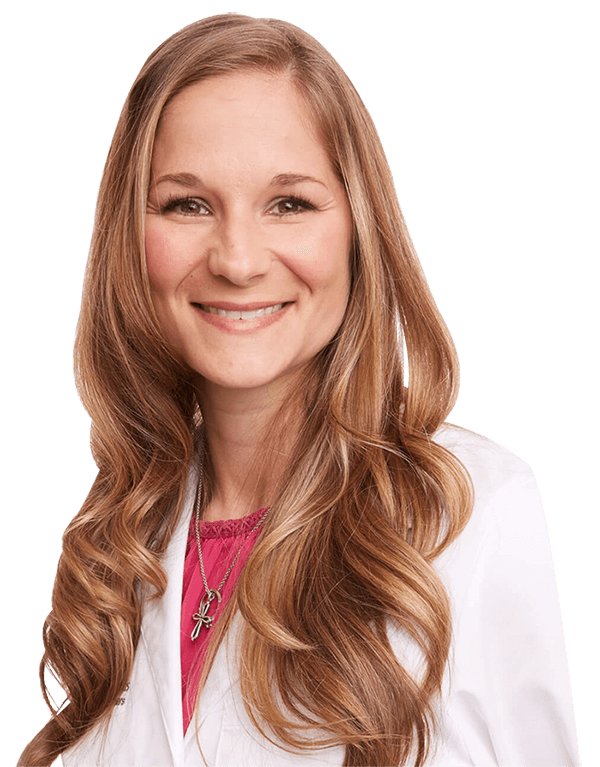
1830 Heritage Park Plaza Murfreesboro, TN 37129 (nearby)
(615) 900-2621
Schedule a Consultation
Mon-Fri 8AM-5PM
Welcome to the private practice of Dr. Lindsay Keith, Murfreesboro’s only fellowship-trained surgical breast oncologist. Dr. Keith made Murfreesboro her home in 2017, bringing specialized expertise that sets her apart. Unlike general surgeons who perform breast surgery, Dr. Keith has dedicated years to advanced, focused training in breast cancer surgery, offering a level of care unmatched in our region.
In October 2023, Dr. Keith transitioned into private practice, creating a more personal, comfortable, and efficient experience for her patients. Here, you won’t navigate the challenges of a large hospital or medical complex. With our convenient parking, single check-in, and small, welcoming lobby, your visit is seamless and stress-free. You’ll see only Dr. Keith and her carefully selected team, ensuring a compassionate and attentive approach every step of the way. When you join her practice, it’s like joining a family — we’re here to support you fully, through every stage of care.
In mid-2024, Dr. Keith expanded her practice by opening a medical spa designed with her cancer patients in mind. Witnessing the rapid aging that often accompanies cancer treatments, she saw her patients struggling with the impact on their appearance and well-being. Driven to bring them a solution, she introduced aesthetic services right within her practice. This endeavor has become a powerful way for Dr. Keith to help her patients not only fight cancer but also reclaim confidence and vitality in their lives.
At Lindsay Keith, MD, we’re committed to providing a specialized, supportive environment where patients receive the expert care they need in a place that feels like home. Whether you’re here for surgical care or exploring aesthetic treatments, Dr. Keith and her team are here to help you live your healthiest, most empowered life.
Our website is thoughtfully divided to address both your unique needs and interests. For patients seeking specialized breast health services, the “Breast” section offers targeted information and resources. Meanwhile, those interested in our medspa offerings can explore rejuvenating aesthetic treatments in the “Beauty” section. To begin, simply click the button that best suits your needs: Breast or Beauty.
What Brings You Here Today?
The role of a medical director in a medspa is essential, ensuring that medical procedures
Why Medspas in Tennessee Need a Medical Director: Understanding State Requirements Medspas have become increasingly
In the realm of skincare, Platelet-Rich Plasma (PRP) therapy stands out as a revolutionary approach
In the pursuit of radiant, healthy skin, the role of regular facials cannot be overstated.
In the world of skincare, achieving a radiant, smooth complexion often starts with effective exfoliation
The skincare industry is continually evolving, offering new and innovative treatments to address a variety
In the quest for youthful, radiant skin, Restore Micro-Needle Infusion emerges as a leading solution.
College life brings with it the thrill of independence and new challenges, and amid all
Achieving glowing, healthy skin is more than just what you put on your face; it's
Dr. Lindsay Keith is located and provides medical services to Murfreesboro, TN, and the surrounding areas.
Learn More About Dr. Lindsay Keith By Visiting Our Online Profiles On Healthgrades. And Be Sure To Leave A Review On Google Maps.
Tennessee is a landlocked state in the U.S. South. Its capital, centrally located in Nashville, is the heart of the country-music scene, with the long-running Grand Ole Opry, the Country Music Hall of Fame and Museum, and a legendary stretch of honky-tonks and dance halls. In the far southwest, Memphis is the home of Elvis Presley’s Graceland, rock-and-roll pioneering Sun Studio, and the blues clubs of Beale Street.
Capital: Nashville
Points of interest: Dollywood, Great Smoky Mountains National Park
Colleges and Universities: Tennessee State University, University of Tennessee
Answering the call to serve has been my life work, and being your doctor is an immense privilege. Thank you for entrusting me with your care.


1830 Heritage Park Plaza Murfreesboro, TN 37129 (near me)
(615) 900-2621
Schedule a Consultation
Mon-Fri 8AM-5PM